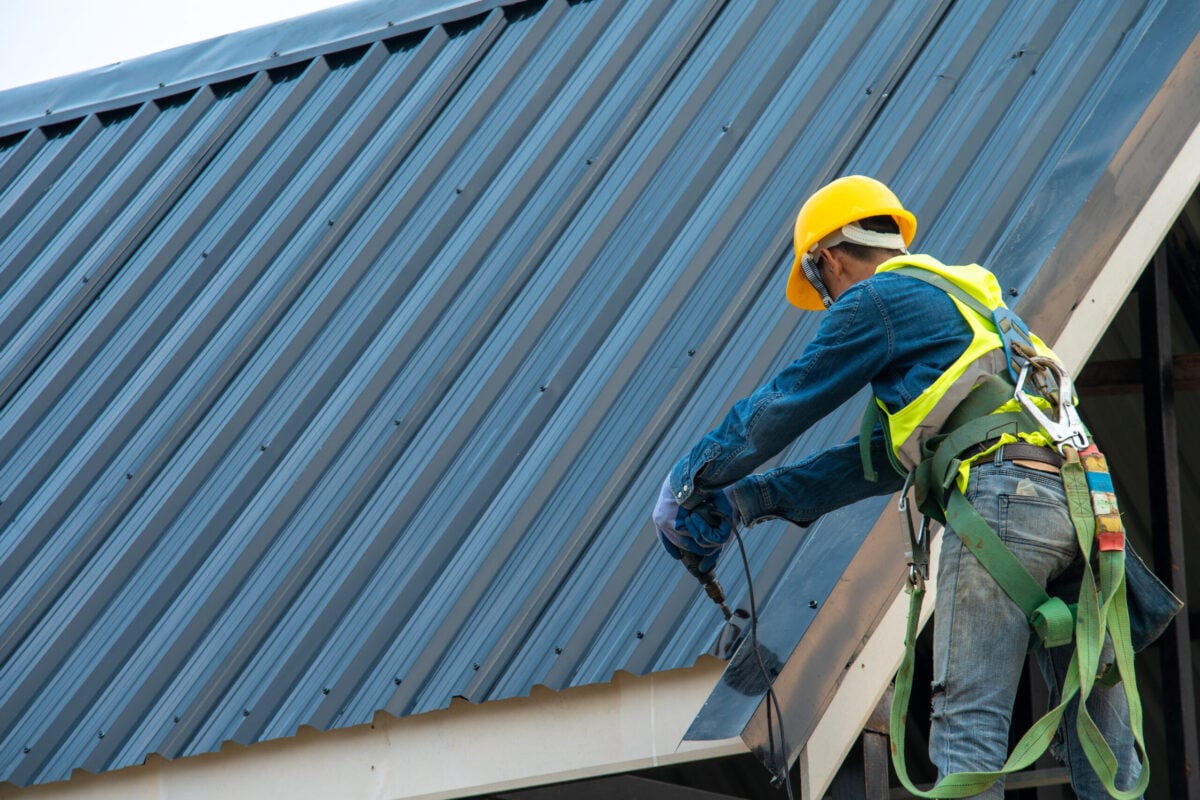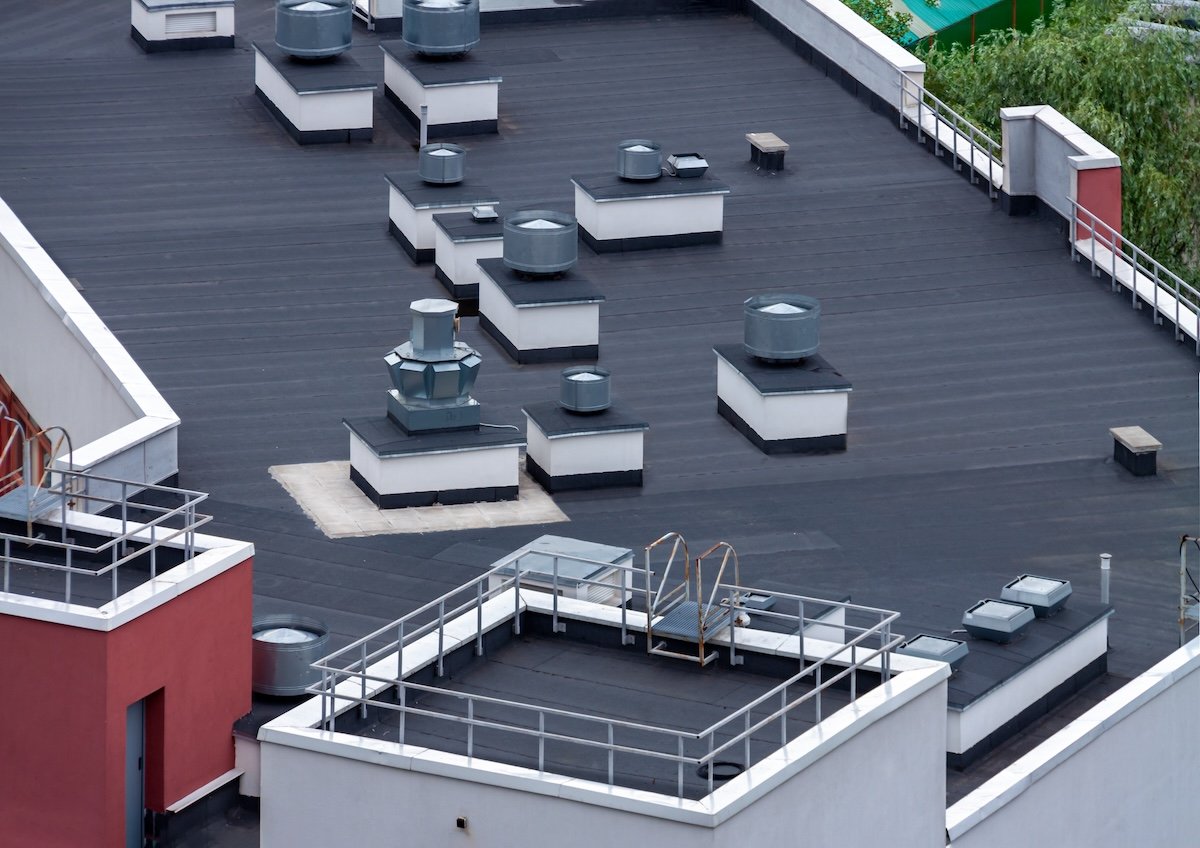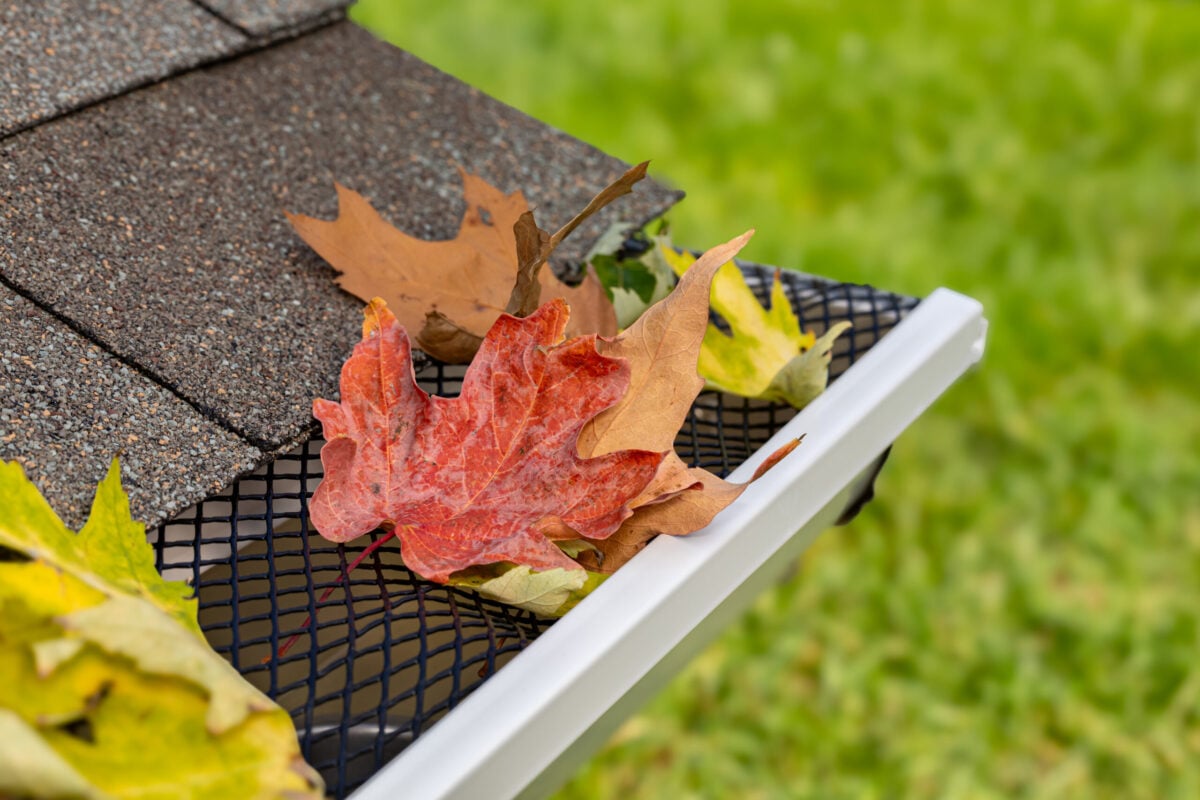Common Commercial Roof Types: A Complete Guide
8 Min Read
POSTED 19.06.2025
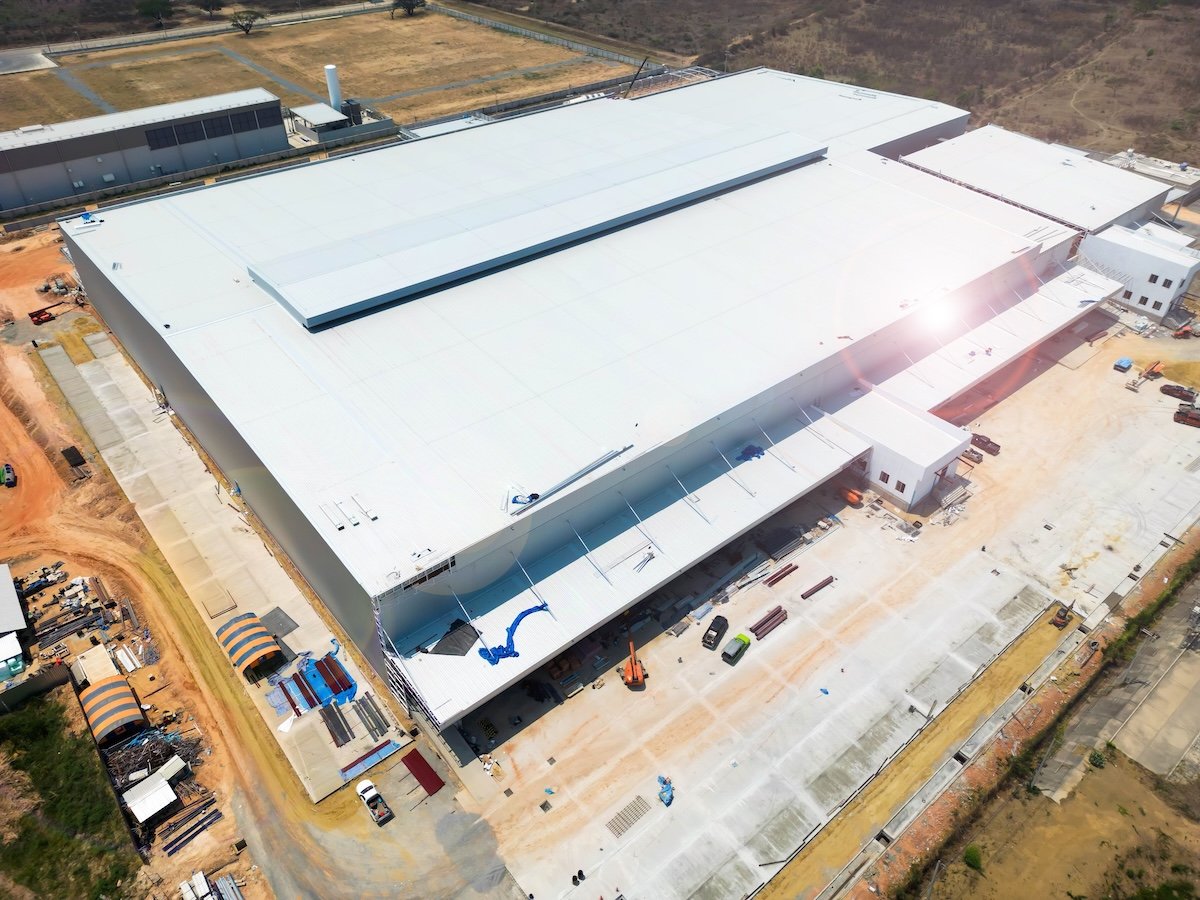
Investing in the right commercial roof is a critical decision for any business. Your roof not only protects your assets but also impacts energy efficiency, operational costs, and the overall safety of your building. With so many commercial roof types available, how do you choose the best option?
This guide will walk you through everything you need to know about commercial roofing options, including the most common commercial roof types, key things to consider when choosing a roof, and how to maintain it for long-term success.
Here’s what we’ll cover:
- Factors to consider when choosing a commercial roof
- 6 types of commercial roofs explained
- How to maintain your commercial roof for maximum longevity
🛠️ Factors to Consider When Choosing a Commercial Roof
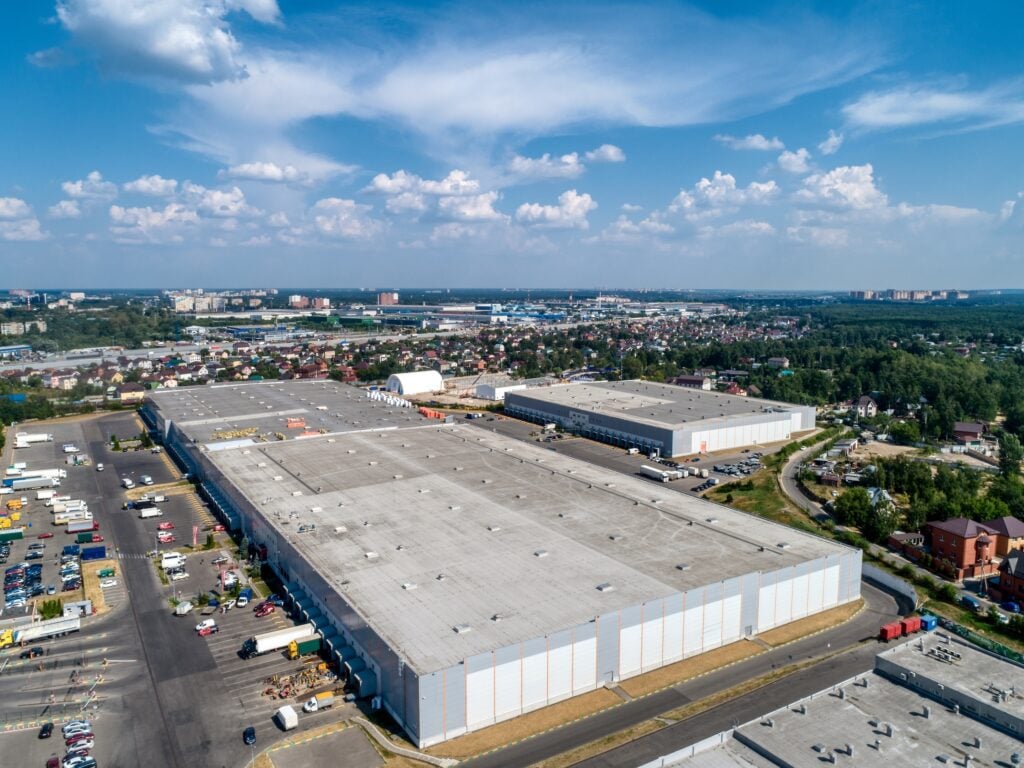
Choosing the right roof for your business is a critical decision that impacts energy efficiency, durability, and costs. With so many options available, it’s essential to weigh several key factors to ensure the roof meets your specific needs and provides long-term benefits. Here are the most important aspects to consider when making your decision:
- Climate and Weather: Consider materials like TPO or metal for durability and energy efficiency in extreme conditions like harsh winters or high heat.
- Building Type and Roof Slope: TPO and EPDM are great for flat roofs, while metal suits a range of slopes.
- Budget and Lifespan: Factor in long-term savings from energy-efficient options, such as green roofs, despite their higher upfront costs.
- Installation and Maintenance: Professional installation and periodic upkeep are necessary for certain roofs like modified bitumen or BUR, adding to total costs.
🔎 6 Types of Commercial Roofs Explained
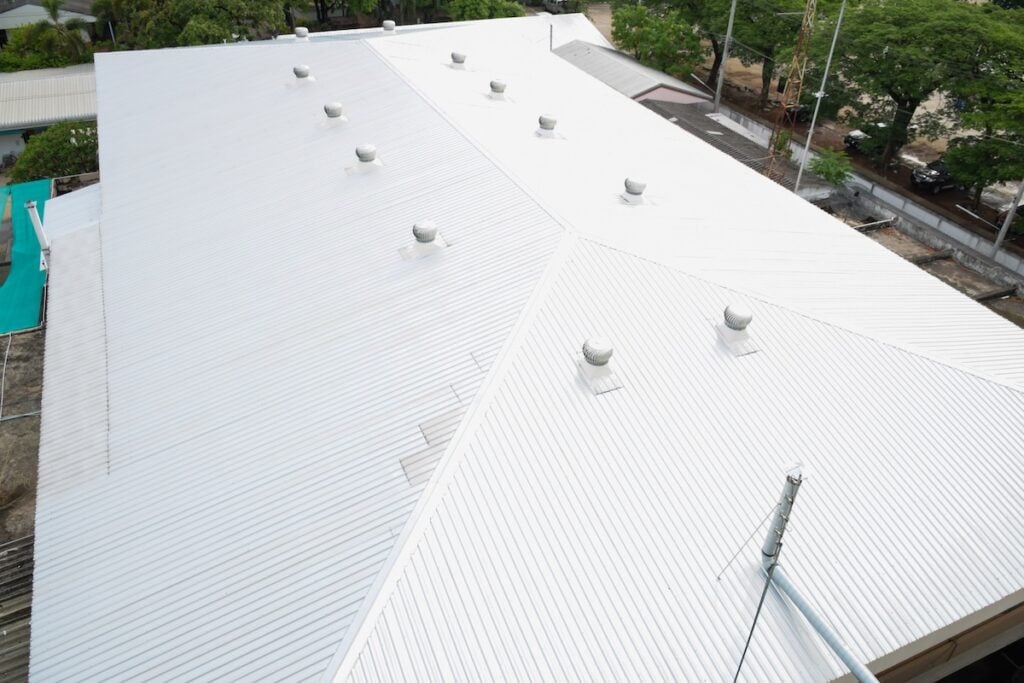
There is a wide variety of roofing systems used on commercial buildings. Each type offers specific benefits, from durability to cost-effectiveness. Below is a detailed list of the most common types of commercial roofs.
1. Metal Roofs
Metal roofs are a popular choice for both residential and commercial buildings due to their exceptional durability and aesthetic versatility. These roofs are typically made from materials like steel, aluminum, copper, and zinc, each offering unique benefits. Metal roofs often have a long lifespan, lasting between 40 to 70 years or more, making them a worthwhile investment for those seeking longevity. They are highly fire-resistant and can endure harsh weather conditions such as heavy snow, strong winds, and intense sunlight. Additionally, the reflective surface of metal roofs improves energy efficiency by reducing heat absorption, which can lower cooling costs in the summer. However, their higher upfront cost compared to other roofing materials may be a drawback for some homeowners or businesses.
2. TPO (Thermoplastic Polyolefin) Roofs
TPO roofs are a cost-effective and lightweight option that has gained popularity for their excellent energy efficiency. These roofs are particularly well-suited to warm climates due to their heat-resistant and reflective properties, which help maintain cooler indoor temperatures. TPO roofing is also highly resistant to mold, punctures, and tears, making it a reliable and low-maintenance option. Furthermore, the lightweight nature of TPO contributes to easier installation, reducing labor costs and time. However, one downside to TPO roofs is their limited lifespan, which typically ranges from 15 to 20 years, making them less durable than some other roofing materials.
3. EPDM (Ethylene Propylene Diene Monomer) Roofs
EPDM, often referred to as rubber roofing, is a cost-effective and reliable solution for both residential and commercial buildings. This material is known for its impressive durability, offering strong resistance to damage from weather, impact, and general wear and tear. EPDM roofs are also excellent for insulation, helping to reduce energy costs by maintaining consistent indoor temperatures. If punctured, EPDM is relatively easy to repair, adding to its appeal as a low-maintenance option. However, black EPDM roofs can absorb significant heat, making them less ideal for hot climates unless coated with a reflective material to mitigate heat absorption.
4. Modified Bitumen Roofs
Modified bitumen roofs are made from asphalt and are widely appreciated for their superior weather resistance and robustness. These roofs can last approximately 20 years and are ideal for rooftops that experience heavy foot traffic, such as those used for maintenance or HVAC systems. The material can also be applied in multiple layers, which enhances its protective qualities, making it a great option for those seeking extra durability. While modified bitumen roofs are a reliable choice, they do require professional installation to ensure proper application, as well as periodic maintenance to extend their lifespan.
5. Green Roofs
Green roofs have been gaining popularity, particularly in urban areas, as a sustainable and visually appealing choice. These roofs consist of a layer of vegetation that not only adds aesthetic value but also improves air quality by filtering pollutants. Green roofs help reduce the heat island effect commonly seen in cities by lowering the temperature on roof surfaces. They are also energy-efficient, providing natural insulation that reduces heating and cooling costs. However, green roofs require regular maintenance to ensure the health of the vegetation, which can be time-consuming. Additionally, their initial installation costs are higher compared to more traditional roofing options, though the long-term benefits often outweigh the expense.
6. Built-Up Roofing (BUR)
Built-up roofing, or BUR, is a traditional option that consists of multiple layers of tar and gravel, providing excellent durability and weather resistance. These roofs are particularly effective for low-sloped applications and can last up to 30 years with proper care. BUR offers strong UV protection, helping to extend the life of the roof by reducing sun damage. However, built-up roofs are heavy, requiring a sturdy structure to support the added weight. They are also labor-intensive to install, which can increase the initial cost of installation compared to other roofing systems. Despite these challenges, their long lifespan and proven reliability make them a solid choice for many property owners.
👉 How to Maintain Your Commercial Roof for Maximum Longevity
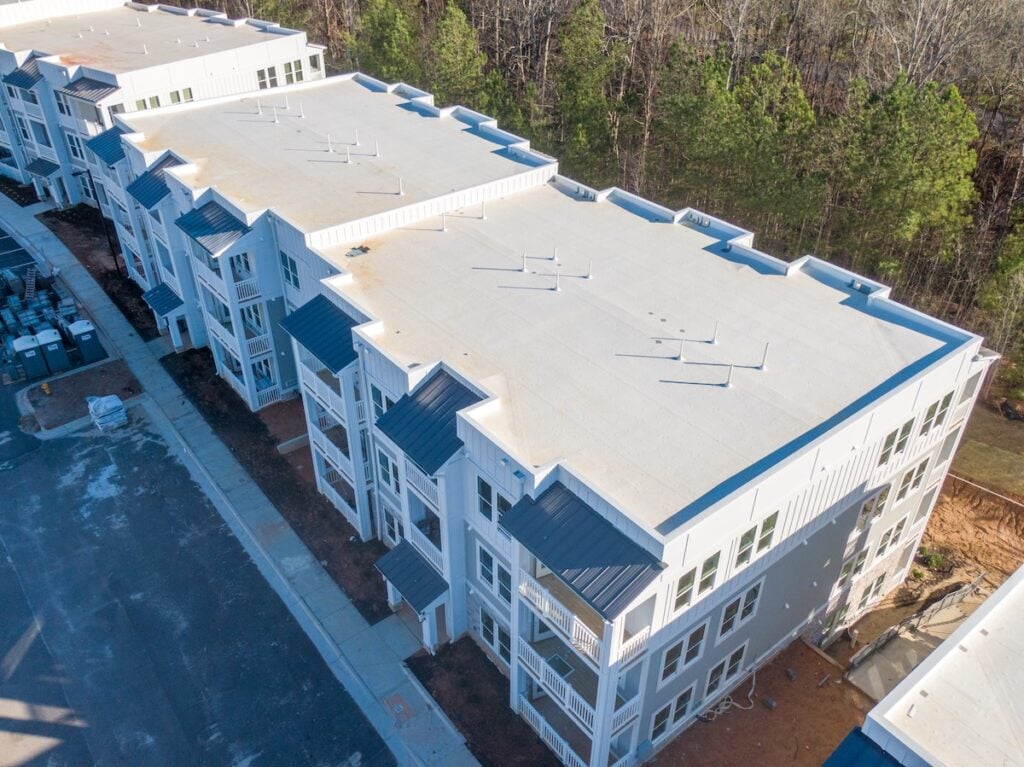
A well-maintained roof not only lasts longer but also helps you avoid costly repairs. Here are key maintenance tips:
1. Schedule Regular Inspections
Make it a priority to have your roof inspected at least twice a year—once in the spring and once in the fall. Additionally, schedule an inspection after major storms to ensure there’s no significant damage. Professional inspections can help identify leaks, punctures, or areas of wear and tear that aren’t always visible to the untrained eye. Catching these issues early can save you from costly repairs later on and prevent further damage to the structure beneath your roof.
2. Clean Debris
Debris like leaves, branches, and dirt can accumulate on your roof over time, especially in areas with heavy tree cover. This buildup can lead to water pooling, which puts extra pressure on your roof and increases the risk of leaks. Additionally, clogged drainage systems can cause water to back up, leading to structural damage. Regularly clearing debris not only helps maintain proper water flow but also prolongs the life of your roof by reducing unnecessary stress on the materials.
3. Repair Minor Issues Quickly
Even small issues like hairline cracks, loose flashing, or missing shingles can escalate quickly if left untreated. Over time, these minor flaws can allow water to seep into your roof, weaken the structure, and cause mold or rot. Addressing these problems as soon as they are noticed ensures that you avoid more extensive and expensive repairs down the line. Regular maintenance and prompt repairs can significantly extend the lifespan of your roof.
4. Apply Coatings
Adding reflective or protective coatings to your roof can provide multiple benefits. Reflective coatings are particularly effective for energy efficiency, as they help reduce heat absorption, which keeps your building cooler and lowers air conditioning costs. Protective coatings, on the other hand, can shield the roof from UV rays, extreme weather, and general wear and tear. They are especially beneficial for materials like EPDM and metal roofs, as they can prevent cracking, corrosion, and other forms of damage, ultimately extending the life of your roof.
🏢 Commercial Roof Types For You
When it comes to your commercial roofing needs, choosing the right team can make all the difference. At Badgerland Exteriors, we bring expertise, reliability, and a customer-first approach to every project. Whether you need a new roof installation, repairs, or maintenance, our experienced professionals ensure top-notch workmanship tailored to your business.
With an A+ BBB rating and a track record of satisfied customers, we’re the trusted choice for businesses looking for durable and energy-efficient roofing solutions. Ready to get started? Contact us today for a free consultation and see why Badgerland Exteriors is the team you can count on!
Let’s Get Started
Fix Your Roof the Badger Way
Got a question? Want to learn more about your options when it comes to caring for your home exterior? Our team is standing by with the information you need to start you roof replacement project today!

